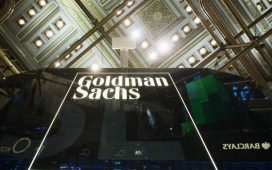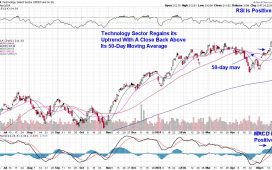Janet McCall sparked a good deal of excitement when she took up her role on the floor of the London Stock Exchange in 1978 as the first female dealer at broker Wedd Durlacher.
“Colleagues say that Janet is dark if not sultry, shapely and single, very promising and when it comes to business: tough,” one press cutting from the time of her appointment noted. “Perhaps she will not spoil the atmosphere after all.” Another article observed that the 22-year-old “pretty brunette” from Essex, who was joining a team of 84 men, did not have “a special boyfriend” in her life at that point.
Wedd Durlacher was consumed by Barclays back in 1986. Janet McCall, now Janet Stevens, went on to become a director at UBS. Now, women are represented in senior roles across the City, and language like that is bracing enough to make any modern reader wince.
But the LSE believes remembering that time matters. This week it is marking 50 years since women like Janet were first admitted on to the floor of the exchange that had been the tightly guarded preserve of men for more than 170 years.
“Change has come, but so much more is required,” said Julia Hoggett, LSE chief executive.
The journey for women on to the floor of the exchange on March 26 1973 was not smooth. Ranald Michie, emeritus professor at Durham university and author of The London Stock Exchange: A History in 1999, said the council of the exchange put the matter to a vote among its members several times before 1973. “The council could see the need for change,” he said. But each time, it was rejected, by a huge margin. “People were inventing all sorts of reasons to stop them coming in,” Michie said.
Women were present in the City, largely as typists or telephonists. But exchange members threw up objections that, by today’s standards, seem bizarre. What if women used their female charms or short skirts to secure better prices? What if they were physically incapable of jostling their way through a crowded trading floor? “One man complained that if his wife came to the viewing gallery and saw him talking to attractive women, he’d be in trouble when he got home,” Michie said.
But pressure for change was becoming unbearable. Before the first world war, London accounted for a third of trading in all securities around the world, including government bonds, Michie said. By the 1960s, much of that international heft had melted away. Both domestic and international listed businesses had often been nationalised. Calls for greater competition were building, and the London market was struggling to justify its fixed trading fees. Moreover, the world was moving on; the resistance to women was starting to look anachronistic.
The breakthrough came when 11 regional British and Irish stock exchanges merged — a step agreed by members in 1972. Exchanges in Liverpool, Manchester, Glasgow and elsewhere were all folded into London. Several of them, including Aberdeen and Huddersfield, had already accepted women as members since the mid-1960s. “Suddenly you had the prospect of these northern women coming to London and going on the floor, and you couldn’t stop them,” Michie said.
“Women had been trying to force change behind the scenes” for decades, said Dr James Taylor at Lancaster university. But the amalgamation — and successful legal campaigns for professional recognition by women in other industries — helped one aspiring floor member, Muriel Bailey, also known as Muriel Wood, to take a more vocal stance. She pointed out that female membership of some but not all parts of the combined group would create a two-tier system. Even then, Taylor said, “it still took months to face up to reality . . . It was performative misogyny. People were proud of having voted against women joining, it was two fingers up to public opinion.”
At the same time, inflation was on the up, and pension fund managers were mindful that if they were to pay out the sums that retirees had been promised, their savings pots would have to look beyond bonds paying fixed rates.
“Investors were looking for something that would hold value in an inflationary environment. Equities provided opportunities,” Michie said. The admission of women on to the trading floor helped them participate in this boom too, putting them in a better position when the so-called Big Bang of market deregulation landed in the 1980s.
Even then, women on the trading floor faced a tough task. “There was never any victory in allowing them in,” said Taylor. “This was not the result of a positive vote. Women were seen as intruders.” Three weeks after women were first allowed in, press reports show that one woman, on her second visit to the floor, was catcalled and verbally abused. “This hasn’t frightened me off,” she said. “I’m simply ignoring it.”
All of the early female traders who spoke to the Financial Times about their experience of the 1970s and 1980s had fond memories of that time, despite their very different treatment to male colleagues. One, Sarah Danes, who joined the exchange in 1978 with stockbrokers Vivian Gray, recalls that she was not permitted to wear trousers to work until 1996.
Women are still a relative rarity in trading roles. “Half a century later, our sector has not fully redressed the structural inequity and imbalances that characterised the experience of women — and barred them from professional growth in our sector,” said Hoggett at the LSE.
The Financial Conduct Authority, the UK regulator, said it believed “a diverse and inclusive culture results in better judgment and decision-making and encourages innovation”.
“We look forward to an open discussion on how we should use our powers to further diversity and inclusion within financial services, to the mutual benefit of firms and their customers.”
Additional reporting by Akila Quinio







